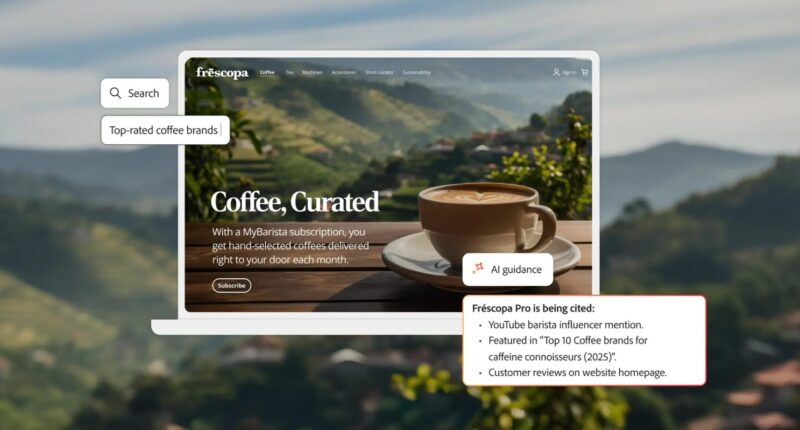Adobe has launched two enterprise AI products targeting businesses seeking to build custom generative models and improve visibility across AI-powered search interfaces, as new data shows AI traffic to US retail sites increased 1,100 per cent year-over-year in September 2025.
The company announced Adobe AI Foundry on Monday, a service allowing enterprises to build custom generative AI models trained on their branding and intellectual property, reports TechCrunch. The foundry’s custom models produce text, images, video and other media, including 3D scenes, built upon Adobe’s Firefly family of AI models launched in 2023.
Hannah Elsakr, vice president of generative AI new business ventures at Adobe, said the foundry service represents a natural expansion responding to customer demand for customisation. “This is elevating a lot of the capabilities we already had,” she said. “The enterprise has asked us to come in and advise us, help us, partner with us, be our premier creative marketing AI partner on this.”
Fine-tuning enterprise models
The Firefly models, trained entirely on licensed data, have been used by enterprises to create more than 25 billion assets since 2023. The foundry service fine-tunes these models for each customer using their intellectual property, with pricing based on usage rather than per-seat licensing.
Elsakr said custom models will enable brands to maintain advertising campaigns across different seasons, languages and formats from a single creative. “It’s highly personalised,” she said. “We’ve been talking about personalised commerce for so long, but generative AI and Firefly make it possible to put the brand in the hand of the consumer in an on-brand way.”
Adobe separately announced general availability of Adobe LLM Optimizer on 14 October, an enterprise application enabling businesses to gain relevance across generative AI-powered interfaces through Generative Engine Optimization. The tool allows teams to monitor AI-driven traffic, benchmark brand visibility and deploy recommendations to improve discoverability across owned digital properties.
Loni Stark, vice president of strategy and product for Adobe Experience Cloud, said the capability has become a priority for executives. “Generative engine optimisation has quickly become a C-suite concern, with early movers building authority across AI surfaces and securing a competitive advantage,” she said. “Adobe LLM Optimizer delivers immediate value by connecting onsite and offsite brand performance insights with automatic optimisation actions, ensuring businesses can stand out in a rapidly changing landscape.”
AI more engaging than social media
Adobe’s September 2025 data demonstrated visitors from generative AI sources were 12 per cent more engaged with longer visits and more pages viewed, and 5 per cent more likely to convert compared to non-AI traffic sources, including paid search, affiliates, email, organic search and social media.
Analysis of early access customers using LLM Optimizer showed 80 per cent had critical content visibility gaps preventing AI surfaces from accessing key product information or reviews. The tool’s recommendation engine detects gaps in brand visibility and suggests improvements across owned and external channels, including content optimisation and technical fixes such as missing metadata.
Adobe’s marketing organisation used LLM Optimizer to address visibility gaps for product descriptions, ratings and reviews. Within one week, citations increased by 5 times for Adobe Firefly, whilst content adjustments across Adobe.com and third-party platforms drove a 200 per cent increase in LLM visibility versus competitors for Adobe Acrobat and a 41 per cent increase in LLM-referred traffic to Adobe.com pages.
Elsakr emphasised that the tools aim to enhance rather than replace human creativity. “Our stance is humanity is at the centre of creativity and that can’t be replaced,” she said. “We have been for decades in the business of providing creative tooling that helps uplift narrative, telling storytelling, your ability to envision and execute your creative vision. Firefly and foundry are just the next evolution of giving you tools in the toolkit that elevate your ability to tell a story.”
LLM Optimizer integrates with Adobe Experience Manager Sites and supports standards including Agent-to-Agent and Model Context Protocol. Adobe also introduced a free Chrome extension powered by LLM Optimizer that reveals what LLMs see and miss across any website.











